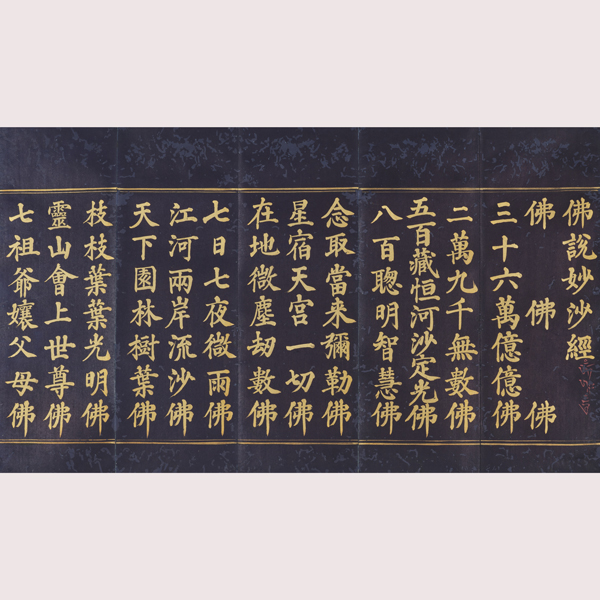市河米庵典藏
-

楷书绀纸金字《妙沙经》(局部)
明神宗 中国 明代 1601年
市河三兼捐赠东洋馆 8展室
2025年5月13日(星期二) ~ 2025年7月6日(星期日)市河米庵(名三亥,1779-1858年)是江户时代末期的代表性书法家,擅长唐样(中国风)书法。他同时也是著名的收藏家,曾藏有大量的书画、古董器物及文具等珍品,且刊有自选的藏品目录《小山林堂书画文房图录》。明治时代,市河米庵的后代将其旧藏品赠予东京国立博物馆,这可谓是本馆中国书画收藏之嚆矢,具有极其重要的意义。
| 指定 | 名称 | 数量 | 作者、出土、传入 | 时代、年代世纪 | 收藏者、捐赠者、展品编号 | 备注 | |
| 推荐 | 草书观世音赞轴 | 中峰明本, 中国 | 元代 14世纪 | 市河三兼捐赠 TB-35 | |||
| 推荐 | 楷书绀纸金字《妙沙经》 | 明神宗, 中国 | 明代 1601年 | 市河三兼捐赠 TB-44 | |||
| 推荐 | 草书五言律诗轴 | 王建中, 中国 | 明代 16世纪 | 市河三兼捐赠 TB-39 | |||
| 推荐 | 行书七言律诗轴 | 周煌, 中国 | 清代 1756年前后 | 市河三鼎捐赠 TB-24 |
